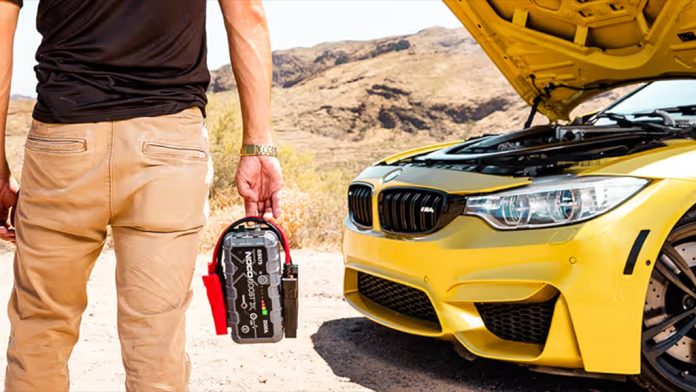Highlights:
- Emergency car repairs often cost more due to urgency, location, and time of service.
- Common emergency repairs include battery failure, flat tires, brake issues, and engine overheating.
- Average repair costs range from $75 for a jump-start to $1,000+ for complex engine or electrical fixes.
- Building an emergency car repair fund of $500–$1,000 can prevent financial stress during breakdowns.
- Researching online reviews before choosing a mechanic helps avoid overpaying or receiving poor service.
- Mobile mechanics are often cheaper and faster for simple fixes, while towing is best for serious failures.
When your vehicle suddenly breaks down or becomes unsafe to drive, the last thing you want is uncertainty about repair costs or whether you’re being overcharged. Emergency car repair situations happen without warning—whether it’s a dead battery, sudden brake failure, or an engine that won’t start. And because these scenarios require urgent attention, they often come with higher-than-usual repair bills and limited time to evaluate your options.
This guide clearly breaks down what to expect from emergency car repair costs, how to budget effectively, and steps to reduce the financial impact of urgent car problems. Whether you’re dealing with an emergency auto repair at home, on the road, or in a remote area, being prepared will help you act quickly and wisely when it matters most.
What Is Considered Emergency Car Repair?
Emergency car repair refers to any unplanned automotive issue that poses an immediate safety risk or prevents your vehicle from functioning. These problems often demand same-day service, mobile roadside assistance, or a quick trip to the nearest repair facility. Because of their time-sensitive nature, emergency vehicle services tend to cost more than scheduled maintenance or standard repairs.
Examples of emergency auto repair situations include:
- Complete engine failure: If the engine won’t crank or start, you’re unable to operate the car entirely.
- Overheating engine: Steam or a high-temperature gauge indicates potential engine damage if not addressed right away.
- Brake malfunction: Grinding, squealing, or sudden loss of braking pressure makes it unsafe to drive.
- Electrical failure: A dead battery, faulty alternator, or starter issues that prevent your vehicle from turning on.
- Flat tire without a spare: Especially dangerous on highways or rural roads.
- Fluid leaks: Sudden loss of oil, coolant, or brake fluid can cause damage or result in total vehicle failure.
- Warning lights: Illuminated dashboard indicators for engine, brakes, oil pressure, or ABS systems require immediate diagnosis.
Emergency auto repair often needs to be addressed on the spot or within hours. Ignoring these issues can increase repair costs significantly or create hazardous conditions for the driver and others.
Emergency Car Repair Cost Chart
| Repair Type | Average Cost Range | Notes |
| Towing Service | $50 – $200+ | Varies by distance, time of day, and location |
| Flat Tire Replacement | $100 – $300 per tire | Premium tires or rim damage cost more |
| Mobile Tire Change | $50 – $100 | Requires a usable spare tire |
| Jump-Start Service | $40 – $75 | Higher in remote or off-hours situations |
| Battery Replacement | $100 – $250 (standard) | $250–$1,000+ for luxury/hybrid vehicles |
| Alternator Replacement | $400 – $800 | Often misdiagnosed as battery failure |
| Radiator Replacement | $300 – $900 | Overheating can lead to severe engine damage |
| Brake Pad Replacement | $250 – $600 | Includes parts and labor |
| Rotor Replacement | +$150 – $400 | Often needed with worn brake pads |
| Starter Motor Replacement | $300 – $700 | Can also cause car not to start |
| Diagnostic & Check Engine Light | $75 – $150 (diagnostic only) | Full repair costs vary based on issue |
| Coolant System Repair | $150 – $800 | Includes hoses, thermostat, flush, and more |
| Emergency Mobile Mechanic Visit | $75 – $150 (minimum fee) | May charge additional for parts or travel |
Average Costs of Common Emergency Car Repairs
The cost of emergency car repair depends on several factors—your vehicle’s make and model, the type of breakdown, location, time of day, and whether you use a mobile mechanic or tow to a shop. Below are national average price ranges for some of the most common urgent car repairs.
1. Towing Service
If your car can’t move under its own power, towing is often the first step.
- Base cost (short distance): $50–$125
- Additional mileage charge: $2.50–$7.00 per mile
- After-hours or long-distance tow: May exceed $200
- Flatbed towing (for AWD or specialty cars): Additional $50–$100
Some insurance policies or memberships (e.g., AAA) include limited free towing. Without coverage, towing quickly becomes one of the more expensive aspects of emergency vehicle service, especially if you’re far from a repair center.
2. Tire Failure or Replacement
A flat or blown-out tire is one of the most frequent roadside emergencies.
- Mobile tire change (if you have a spare): $50–$100
- Tire patch or plug (minor puncture): $20–$40
- New standard tire: $100–$250 per tire
- High-performance or SUV tire: $200–$400+
- Tire + rim replacement: $300–$700 if the wheel is also damaged
In this scenario, having an inflated spare tire and jack in your car can save you the full cost of mobile emergency auto repair.
3. Battery Problems and Electrical Failures
Your car’s electrical system is essential, and battery issues are a leading cause of breakdowns.
- Jump-start service: $40–$75 (higher if you’re in a remote area)
- Battery testing and installation (standard vehicle): $100–$250
- Battery for luxury or hybrid cars: $250–$1,000+
- Alternator or starter replacement: $400–$900
A failing alternator can drain a new battery within hours. If your lights dim or electronics fail while driving, it’s likely more than just the battery.
4. Engine Overheating
Ignoring an overheating engine can cause long-term damage, including a blown head gasket or warped engine components.
- Radiator repair or replacement: $300–$900
- Coolant leak or hose repair: $150–$300
- Thermostat replacement: $150–$350
- Water pump replacement: $400–$800
- Engine diagnostics and pressure testing: $100–$200
Always pull over immediately if your car overheats. Continuing to drive may cause catastrophic damage requiring full engine replacement.
5. Brake Failures
Your brakes are your most critical safety system. Any sudden change should be addressed through immediate emergency car repair.
- Brake pad replacement (front or rear): $250–$600
- Rotor resurfacing or replacement: $150–$400 (additional)
- Brake line repair or fluid leak: $200–$500
- Master cylinder or ABS module repair: $400–$1,200
Grinding noises or soft pedals mean you’ve already worn past the pads and are likely damaging rotors or calipers.
6. Check Engine Light or Performance Issues
Dashboard alerts can signify minor issues—or serious mechanical trouble that requires urgent inspection.
- On-site diagnostics (emergency): $75–$150
- Minor sensor replacement: $150–$300
- Spark plug or ignition coil failure: $200–$500
- Catalytic converter or engine control unit (ECU): $1,000–$2,500+
Getting a scan from a professional is more reliable than DIY code readers, which don’t pinpoint the exact cause.
What Drives Up Emergency Repair Costs?
The final bill for an emergency auto repair depends not only on the problem but also on the circumstances surrounding the breakdown.
Factors That Increase Costs:
- Time of day: Nights, weekends, and holidays incur overtime or emergency call-out fees.
- Location: Remote areas have fewer available mechanics and longer tow distances.
- Vehicle make and model: Foreign, luxury, or hybrid vehicles often require special parts and tools.
- Part availability: If parts need to be ordered same-day or overnight, expect premium prices.
- Labor rates: Dealerships charge significantly more than independent shops or mobile services.
- Repair complexity: Quick fixes cost less; internal engine or electrical issues require more hours and parts.
Budgeting for Emergency Car Repair
Planning ahead is the best way to reduce the financial shock of unexpected vehicle repairs.
Steps to Build a Financial Cushion:
- Create an emergency car repair fund: Set aside $500–$1,000 in a savings account. Start with $20–$50/month and build gradually.
- Log all maintenance: Track oil changes, brake service, battery age, and tire wear to anticipate future expenses. You can use online tools for this kind of tracking.
- Understand your coverage: Some insurance policies, credit cards, or third-party warranties offer roadside support or reduced repair costs.
- Explore financing options in advance: Know which repair shops offer payment plans or “buy now, pay later” services.
- Download mobile apps for repair estimates: Tools like RepairPal or Openbay provide real-time cost estimates and shop reviews.
How to Research Emergency Auto Repair Shops Using Online Reviews
When your car breaks down unexpectedly, you may not have the luxury of choosing between multiple shops. Still, doing quick research online can help you avoid overpriced or poorly rated providers.
What to Look for in Online Reviews:
- Customer feedback on pricing transparency: Look for mentions of fair quotes, detailed invoices, or surprise fees.
- Response time: Some mobile emergency car repair services are rated for their quick arrival and reliability.
- After-hours service quality: Check if the shop treats emergency customers with the same care as scheduled clients.
- Repair warranty information: Reputable shops should stand by their work, even in emergency situations.
- Photos of work and service environment: These can indicate professionalism and cleanliness.
- Review patterns: A few negative reviews aren’t unusual, but repeated complaints about the same issue are red flags.
Recommended Platforms:
- Google Reviews and Maps: Good for checking proximity and availability.
- Yelp and Facebook: Useful for comparing customer satisfaction.
- BBB (Better Business Bureau): Helpful for spotting complaints and dispute histories.
- Mechanic-specific platforms: Use RepairPal, YourMechanic, or AAA’s repair network.
Tip: If you’re stranded but have a few minutes of internet access, compare at least two repair shops or mobile mechanics before calling. Even a quick glance at reviews can protect you from unnecessary costs or poor service.
Cost-Saving Tips for Emergency Vehicle Service
Although you can’t always avoid the need for urgent repairs, you can limit the financial damage with the right habits and resources.
Smart Practices:
- Respond early to warning signs: Noises, smells, and lights often signal problems before they become urgent.
- Keep basic tools in your trunk: A spare tire, jumper cables or a Boost Jump Starter, flashlight, and tire inflator can save you from calling a mechanic.
- Learn essential skills: Know how to change a tire, jump a battery, and check fluid levels.
- Use memberships wisely: AAA, credit cards, and insurance providers may cover towing, diagnostics, or emergency car repairs.
- Request a written quote: This helps prevent surprise charges and gives you leverage for comparison.
- Shop used or aftermarket parts: These can cut parts costs by 30–50% without sacrificing quality.
When Should You Tow vs. Call a Mobile Mechanic?
Knowing whether to call for a tow or request an on-site repair can make a big difference in cost and convenience.
Tow Your Vehicle If:
- The brakes or steering don’t function.
- The car overheats severely or emits smoke.
- You’re on a busy road where mobile service is unsafe.
- A full diagnostic is required.
Use a Mobile Emergency Auto Repair Service If:
- The issue is external and easy to access (battery, tire, fluid refill).
- You’re parked in a safe location or at home.
- You want to save on towing fees and complete the repair faster.
Emergency car repair isn’t just a hassle — it’s often an expensive and stressful experience. But by understanding what typical repairs cost, planning your finances, and doing quick online research, you can make smarter, more confident decisions in a moment of crisis.
Urgent car repairs can’t always be avoided, but the way you respond can significantly impact both your safety and your bottom line. With a little preparation and some savvy research, you can take control of the situation—and get back on the road with peace of mind.



